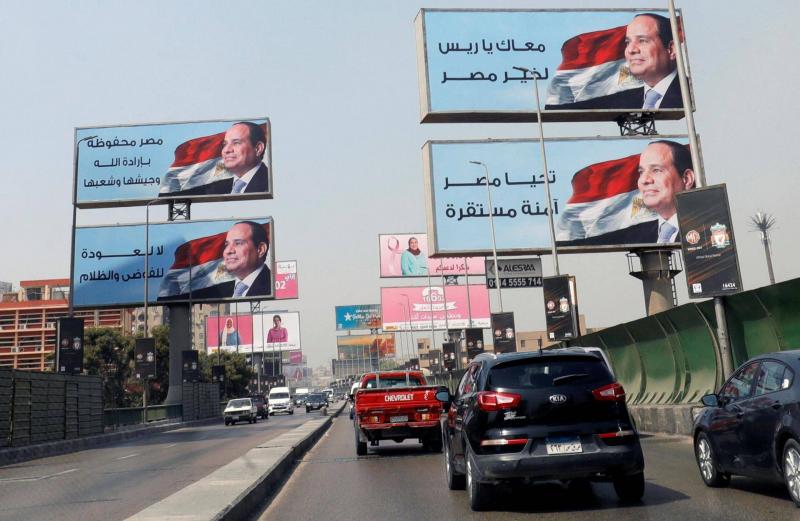Recently, Egypt reached an agreement with the International Monetary Fund (IMF) for an expanded support program worth eight billion dollars. The country allowed its currency to decline sharply and announced that it would allow the exchange rate to be determined according to market mechanisms in an attempt to achieve economic stability. Prior to this step, Egypt secured a 35 billion dollar investment deal with Abu Dhabi sovereign fund (ADQ) to develop a peninsula on the Mediterranean coast and other projects, alleviating the long-standing foreign currency crisis.
Some of the reasons behind Egypt's economic problems date back decades, such as the stagnation of industrial development due to poor planning and bureaucracy, and export policies that resulted in a continuous trade deficit. Moreover, the overvaluation of the currency and the dominance of the state and military have deterred investors and undermined competition. The borrowing spree under President Abdel Fattah el-Sisi led to a buildup of external debts. Foreign creditors have become hesitant to invest, compelling the government to borrow domestically despite rising interest rates, further worsening the deficit. This, coupled with an increase in the money supply, has resulted in a depreciating currency and rising inflation. Foreign investment outside the oil and gas sector has become minimal. Remittances during 2022-2023 dropped by 30 percent to 22 billion dollars, as expatriates refrained from transferring money at the official exchange rate. Additionally, the war in Gaza, near Egypt’s northeastern border, has impacted tourism and revenues from the Suez Canal, causing a 50 percent decrease in canal revenues earlier this year. Sisi has repeatedly attributed Egypt's economic challenges to the turmoil following the 2011 popular uprising, as well as an annual population growth rate of 1.7 percent in 2021, according to the World Bank. Authorities also attribute the challenges to external shocks, including the COVID-19 pandemic and the war in Ukraine.
**How Bad Have Things Gotten?**
Over the past two years, a severe dollar shortage has pressured imports and caused a backlog of goods in ports, affecting local industries. The prices of many basic food items have risen at a pace much faster than the inflation rate, which surged to an unprecedented 38 percent in September. Economic growth has slowed, and many Egyptians complain about their declining standard of living. The Egyptian pound has plummeted by more than two-thirds against the dollar since March 2022 during various devaluation phases, with continued pressure on the currency over the last year, all while the exchange rate remained below 31 pounds to the dollar. The burden of external debt repayments weighs heavily on the country, with rising interest rates and a weakened currency increasing the cost of servicing debt. Interest payments consumed over 45 percent of total revenues in the fiscal year ending June 2023. Official data classified about 30 percent of the population as poor before the COVID-19 pandemic, and analysts say the figures have increased since. Estimates suggest that up to 60 percent of Egypt’s 106 million citizens live below the poverty line or near it. Unemployment has decreased to about seven percent, but workforce participation has also steadily declined over the decade ending in 2020. Some aspects of public education are deteriorating, with many graduates seeking job opportunities abroad.
**Where Has the Money Gone?**
In addition to regular expenses, Egypt has spent large sums on infrastructure under Sisi's presidency, including housing projects, new cities, and road construction. Among these massive projects is the construction of a new capital costing 58 billion dollars in the desert east of Cairo. Furthermore, Egypt's arms imports have increased over the past decade, making it the third-largest importer globally, according to the Stockholm International Peace Research Institute. Officials claim they have ramped up spending on social programs for the needy, including cash handouts covering around five million households.
**What is the Government's Plan?**
Under the recent agreement with the IMF, the authorities commit to flexibility in the exchange rate and fiscal discipline to reduce inflation and trade deficits. The plan leading to the agreement includes structural reforms to encourage private sector growth, including policies to eliminate exemptions and privileges for state-owned enterprises that hold a significant weight. The IMF stated that the agreement also includes "a new framework to slow infrastructure spending, including projects that have operated outside the regular budget oversight so far."
**What Support Can Egypt Build On?**
Western and Gulf countries largely view Egypt under Sisi as a cornerstone of security in a troubled region. Cairo has received billions of dollars in deposits and investments from its Gulf allies, including Saudi Arabia and the UAE, following the shock of the Russian invasion of Ukraine, and it has received renewed commitments for solidarity after the outbreak of the Gaza crisis. However, Arab Gulf countries have tightened their conditions for injecting new funds and are increasingly seeking investments that yield returns. Such investments and sales of state assets remained modest until the ADQ deal for developing Ras Hakma Peninsula, which the IMF acknowledged alleviates financing pressures in the short term. This deal has sparked speculation about potential further deals, including a plot of land near Sharm El Sheikh in South Sinai. Egypt is also looking to expand economic ties with countries including China and India, hoping that its recent accession to the BRICS group will attract more investment flows.




